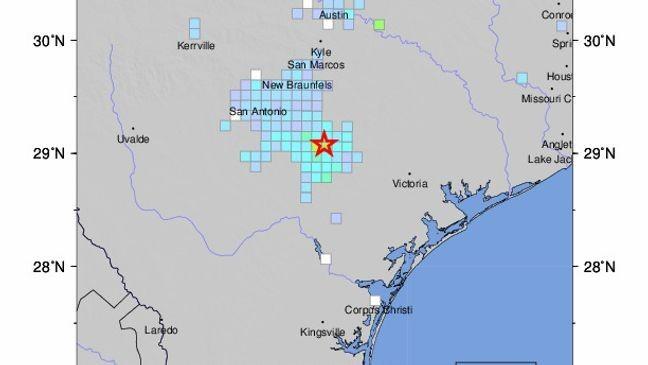Central Texas Shaken: Insights into the Recent 4.5 Magnitude Earthquake Near San Antonio
Overview of the San Antonio Earthquake and Its Regional Impact
Earlier this week, a 4.5 magnitude earthquake struck near San Antonio, Texas, stirring both concern and intrigue across Central Texas. This seismic event, though moderate in strength, was felt widely—from Austin to neighboring counties—making it one of the more significant tremors recorded in this area over the past decade. Given Central Texas’s historically low earthquake frequency, this incident has sparked renewed conversations about seismic preparedness and infrastructure resilience.
Preliminary assessments by local authorities and the US Geological Survey (USGS) indicate the quake originated at a shallow depth of approximately 5 miles, which amplified the shaking experienced by residents. Emergency teams are actively evaluating any structural damage and compiling data to better understand the quake’s characteristics and potential aftereffects.
Experiencing the Tremor: Community Reactions and Immediate Responses
On the evening of the quake, residents throughout Central Texas reported feeling a sudden, noticeable shake. From Austin’s urban neighborhoods to smaller communities surrounding San Antonio, many described the sensation as a strong jolt followed by rattling windows and vibrating household items. Social media platforms quickly became hubs for sharing firsthand accounts, with numerous posts detailing the unexpected nature of the event.
Emergency services noted a spike in calls, though no significant injuries or major property damage have been confirmed. Officials have urged residents to remain vigilant for aftershocks and to review safety measures. Recommended immediate actions include:
- Inspecting homes for structural damage or gas leaks
- Ensuring emergency supplies are accessible
- Monitoring official news outlets for updates
- Checking in with family and neighbors to confirm safety
| County | Intensity Experienced | Current Status |
|---|---|---|
| Bexar | Strong shaking | Ongoing monitoring |
| Travis | Moderate tremors | Damage assessments underway |
| Comal | Light shaking | No issues reported |
Earthquake Preparedness: Essential Steps for Central Texas Residents
This recent seismic event highlights the importance of earthquake readiness, even in regions where such occurrences are infrequent. While Central Texas is not traditionally known for earthquakes, the potential for moderate tremors necessitates proactive safety measures to protect lives and property.
Fundamental preparedness actions include:
- Stabilize heavy furnishings: Secure bookshelves, televisions, and appliances to walls to prevent tipping during shaking.
- Assemble an emergency kit: Stockpile essentials such as water, non-perishable food, first aid supplies, flashlights, and important documents.
- Identify safe zones: Locate sturdy furniture or interior spaces away from windows and heavy objects to take cover during a quake.
- Conduct regular drills: Practice “Drop, Cover, and Hold On” procedures with all household members to build muscle memory.
| Preparedness Measure | Purpose | Recommended Action |
|---|---|---|
| Furniture Securing | Prevents injuries from falling items | Use wall anchors and brackets |
| Emergency Supplies | Supports survival during disruptions | Maintain a 72-hour supply kit |
| Safe Locations | Reduces risk from debris | Designate safe spots in each room |
| Practice Drills | Enhances response effectiveness | Schedule biannual household drills |
Strengthening Homes and Community Preparedness: Expert Advice for Central Texas
In response to the recent earthquake, structural engineers and emergency planners emphasize the need for Central Texas residents to reinforce their homes and develop comprehensive emergency plans. Older buildings, in particular, may benefit from professional evaluations to identify vulnerabilities and implement retrofitting solutions.
Recommended home improvements include securing heavy furniture, bracing chimneys, and installing flexible connectors on water and gas lines to minimize damage during tremors. Additionally, families should establish clear communication plans, including an out-of-area emergency contact and predetermined meeting points.
- Anchor heavy furniture: Attach bookcases and cabinets firmly to walls.
- Conduct structural assessments: Engage licensed professionals for thorough home inspections.
- Maintain emergency kits: Keep supplies accessible and regularly updated.
- Develop communication strategies: Designate contacts and safe meeting locations.
- Practice earthquake drills: Hold drills at least twice a year to ensure readiness.
| Mitigation Action | Estimated Cost | Effectiveness Level |
|---|---|---|
| Furniture Anchoring | $50 – $150 | High |
| Chimney Reinforcement | $300 – $1,000 | Moderate |
| Flexible Pipe Fittings | $100 – $300 | High |
| Comprehensive Home Evaluation | $500 – $2,000 | Very High |
Final Thoughts: Staying Prepared in a Seismically Unpredictable Region
The 4.5 magnitude earthquake near San Antonio serves as a crucial reminder that Central Texas, while not traditionally earthquake-prone, is not immune to seismic events. Residents are encouraged to stay alert for aftershocks and to actively engage in preparedness efforts to safeguard their homes and families. Local authorities continue to monitor seismic activity closely and will provide updates to ensure community safety and resilience.




